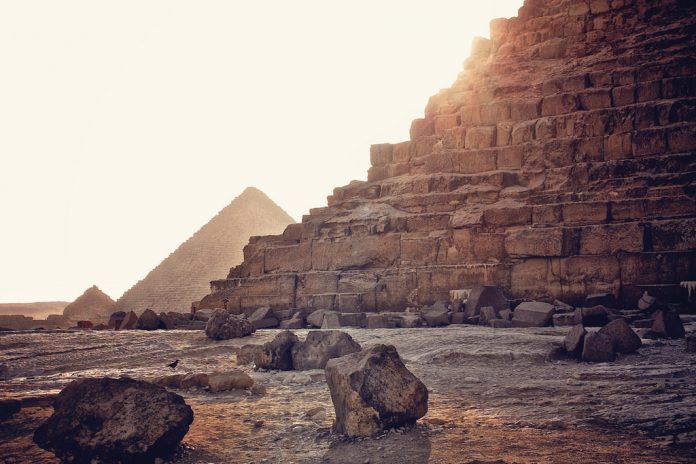
An international team of scientists has discovered an unknown, large void on the Great Pyramid of Giza in Egypt, also known as Khufu’s Pyramid. The researchers used cosmic-ray muon imaging techniques to observe the internal structure of the pyramid, in a project identified as ScanPyramids.
It is still uncertain whether the void is simply a structural gap that formed over time or if it was an architectural decision dating from the origins of its construction. If it was built on purpose, scientists have yet to determine also whether it is simply a void or another chamber.
Egyptologists have criticized researchers in the past for over-sensationalizing discoveries in the country, particularly those related to the ancient pyramids. ScanPyramids has been the target of at least one specialist, who claims others already knew about the existence of the big void.
What are muons and how did scientists use them on the Great Pyramid?
Muons are subatomic particles that derive from cosmic rays, similar to X rays, but much more penetrating on thick surfaces like rocks. These particles “stick” to the materials and allow scientists to scan surfaces deep within buildings like pyramids.
In the case of Khufu’s Pyramid, researchers used scanners around and within the pyramid to map the entire structure as accurately as possible. The resulting images showed a big void sitting above the Grand Gallery, and measuring approximately 30 meters in length.
Other experiments using nuclear emulsion film, gas detectors, and scintillator hodoscopes within and outside the pyramid had hinted at the existence of the hidden chamber, but none of them had been able to scan it and locate it as precisely as ScanPyramids up until now.
Muon particles – a by-product of cosmic rays – have helped reveal a secret chamber in Egypt's Great Pyramid: https://t.co/mapydLkEeV pic.twitter.com/y3VXestc8l
— nature (@Nature) November 2, 2017
Egyptologists slam ScanPyramids over incorrect claims
Speaking to Ahram Online, the prominent Egyptologist Zahi Hawass told the local web portal that the ScanPyramids team and their claims published in the journal Nature this Thursday were factually incorrect.
He and other experts who have spent their lives working in the ancient pyramids have repeatedly told science teams about their research on how the structures were built. Their findings are not 100% conclusive, but they believe it was part of the construction process of the Great Pyramid to leave it “full of voids.”
Taken, the new void is larger than one would expect, and its elongated layout could very well make it an upper chamber. Hawass and others form the scientific committee at the service of Egypt’s Antiquities Ministry, which is in charge of reviewing the studies conducted in the heritage sites of the country.
Source: Nature











